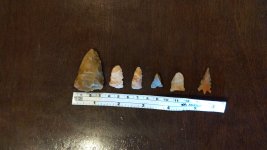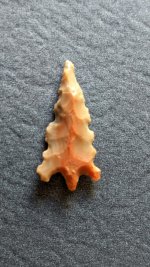My son and I found multiple arrowheads at an old Indian hunting camp near my parents cabin. It is in northeastern Arizona and supposedly the hunting site is about 800 years old. We also find tons of unpainted pottery there and an occasional painted piece. Can anyone give me any more info about these arrowheads? The big one looks like it may have been more of a spear point. In all my searching online, I've never seen a small arrowhead that has the three points at the base.
Attachments
Upvote
12





 The other two that have been worked all the way around are just crudely made small blades/knives.
The other two that have been worked all the way around are just crudely made small blades/knives.